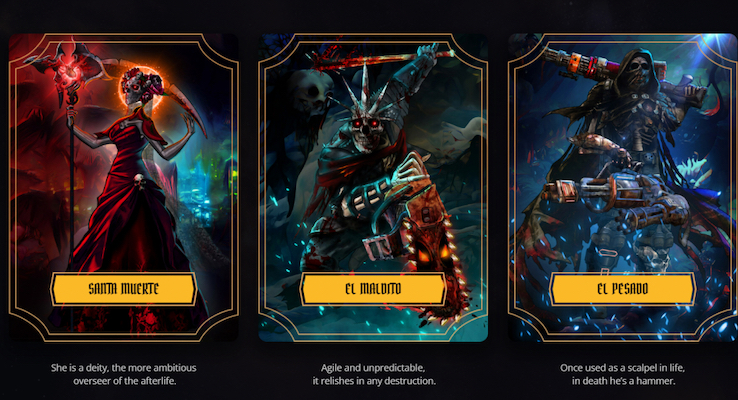Join Our Telegram channel to stay up to date on breaking news coverage
The euphoria surrounding the metaverse crested early last year, but if the public eventually decides to own digital property and launch enterprises on the internet, they’re going to require a platform for selling real estate designed for more than just speculative flipping.
Or, to put it another way, a Redfin or Zillow for the developing metaverse.
That’s what Metahood is creating, and it has secured seed money to realize this goal. The startup revealed today that it has received $3 million in a seed round, with participation from Volt Capital, Flamingo DAO, and Neon DAO, as well as cryptocurrency venture capital firm 1confirmation.
The Sandbox co-founder Sébastien Borget, SuperRare co-founder John Crain, Sorare Growth Lead Brian O’Hagan, and VC and blogger/podcast host Packy McCormick all contributed to the startup’s fundraising round.
The Metahood platform is intended to provide buyers of metaverse land with more context than a general-purpose NFT marketplace. It employs a map-based interface to display available land plots in relation to those around them, giving users a sense of the surrounding area while highlighting sales patterns, local landowners, and more.
The company’s creator, Gwendall Esnault, stated,
We truly want to provide as much information and context as possible when you acquire land.
The metaverse’s current state is still far from the grandiose goals of its creators, both inside and outside of Web3.
The Sandbox has just published a small number of beta test experiences, Otherside seems to be far from release, and Meta’s Horizon Worlds is a far cry from its ultimate, robust metaverse vision. Decentraland is boring and barely populated.
Potential metaverse residents may not need to take into account factors like walkability or school quality, but if you’re going to invest real money in virtual real estate or plan to create an experience there, you should be aware of what you’re getting into. That is a gap that a bigger market like OpenSea doesn’t address, but Metahood does.
Decentraland, The Sandbox, the Otherside of the Bored Ape Yacht Club, and Somnium Space are just a few examples of early and under development metaverse game environments that are supported by Metahood. While layering in more context, the platform will support native NFT land plot listings from individual users as well as aggregate listings from markets like OpenSea and LooksRare.
The platform intends to expand its feature set, provide a hub for Web3 users to more easily find metaverse experiences, and add more metaverse worlds as they appear. Esnault, a lone entrepreneur, now oversees a team of three people and intends to use the funds to increase headcount and eventually improve the platform.
Some Web3 metaverse worlds have land plots represented as NFTs, which are openly tradeable blockchain tokens that signify ownership of particular items. These stories are frequently used to develop and deploy digital goods and services, including interactive games, and they can also be rented out or made money from in other ways.
Ups and downs in the metaverse real estate market
When Facebook changed its name to Meta and announced its own idea for an immersive internet, interest in the metaverse skyrocketed in late 2021. In the months that followed, Web3 land plot prices skyrocketed, and Yuga Labs’ Otherside land drop in April 2022 generated $561 million in sales in the first day.
However, demand and prices have dropped significantly as a result of falling cryptocurrency and NFT values as well as general skepticism over the true worth of the metaverse.
Esnault acknowledged that it was “not the best moment” to launch a project focused on the metaverse and raise finance, but said that it was also pointless to try to time the market. He recognizes the benefits of a user-friendly marketplace that enables potential land purchasers to acquire a sense of a virtual town as it develops.
As the company’s creator and general partner, Nick Tomaino stated that
That’s what Metahood is: it loves to help good innovators building in categories after the first boom period.
Tomaino claimed that the overhyped nature of the metaverse was evidence that “the trend is true,” even if some of the early adopters weren’t in it for the long haul.
No doubt, there has been a significant decline in metaverse excitement, but the tendency is still present. Virtual real estate is still available in games and virtual worlds, hence a market place is needed to make these resources more widely available.
Calvaria Presale
Outside of the area of the metaverse, another area with a lot of potential growth is the crypto games space. In this sector, a new game called Calvaria is having a presale and about $3 million has been raised through the effort since the presale began.
Just two weeks remain for investors to purchase tokens prior to the IEO, and during that period, the price is anticipated to soar. Listings for the RIA currency on GotBit and LBank have already been confirmed, in addition to the BKEX IEO on January 31.
There are only 7.5 million RIA tokens available for purchase at a price of $0.0325 per token. Investors still have time to participate in this token presale, which has the potential to return 10 times the amount invested as the presale draws to a close.
What Sets Calvaria Apart?
Calvaria is marketed as a cutting-edge, one-of-a-kind blockchain gaming platform that aims to incorporate a number of Web3 concepts into a user-friendly and engaging experience. Players build an avatar from a wide range of playable races and classes when they join a Metaverse with the idea of an afterlife.
Each and every sign in Calvaria has its own own token to symbolize it (NFT). These NFT trade cards are used to build the decks that players use to compete against one another.
They employ complex strategies to acquire new items and points, and the winner is awarded with eRIA, the platform’s in-game money. Since they can cash out their winnings in for real money, players are incentivized to keep playing.
The network stands out for gamers because of a variety of features. Any gadget, at any place, can be used to play the game. No special tools are needed; players may just download the game to their cellphones and begin playing.
The P2E version, in comparison, offers a wide range of features where every card is an NFT. Players may quickly put together the best deck they can and then sell it to other players. The rare characteristics of these cards give their owners a significant competitive edge.
What Makes The RIA Token So Unique?
The designers of Calvaria have incorporated a local coin that is comparable to those found in numerous other blockchain-based games. A great tool for in-game purchases and raising player engagement is the RIA digital asset.
As is the case with most new currencies, the RIA rollout started with a pre-sale. Even with the present unfavorable market conditions in 2023, this offering has been one of the most successful since the presale started in the final quarter of 2022.
The RIA presale, which has raised close to $3 million, will soon come to an end. However, only 8% of the original coin supply is still in use. Investors will then only be able to purchase RIA on regulated marketplaces.
The platform’s developers recently disclosed that after the presale is a success, the token will be listed on well-known exchanges including BKEX and LBank. You should keep in mind that eRIA can take the place of traditional RIA, among other things. The token may be sold for immediate payment after the transaction is complete.
The fact that RIA is a proof-of-stake (PoS) currency adds to its value. The token offers the opportunity to increase your chances of winning and actively take part in determining the course of Calvaria’s numerous platform developments, upgrades, and other activities.
Which way will RIA pricing trend in 2023?
It is realistic to suppose that the project will have grown significantly in the months following its release, attracting thousands of users with both paid and free subscriptions. This will help determine the way the price of Calvaria will go in 2023.
This is great news for the Calvaria ecosystem, and it could have significant implications for the RIA token in the coming months. This development may lead to RIA becoming one of the best altcoins of the year.
NFT games are by nature competitive, therefore the development of the Calvaria ecosystem might make it easier for the project to enter the eSports market. A successful launch might position Calvaria at the center of the most popular eSports competitions in the world. Since the majority of Calvaria’s target audience consists of competitive players, this channel could be beneficial for the cryptocurrency card game.
Calvaria used a somewhat different strategy from the bulk of other well-known cryptocurrency games, which were largely developed on the Ethereum network. Calvaria can benefit from Ethereum’s dependability and usability by constructing on the Polygon network, which is great for business in the long run because it lowers costs and boosts the game’s ability to handle a huge user base.
In addition to the entertaining and lucrative gameplay designed to appeal to a broad spectrum of gamers, the Calvaria team has included staking for the RIA token. By allowing token holders to benefit, RIA is anticipated to increase in value when tokens are removed from exchanges and become more difficult to get. One billion RIA tokens, or around a quarter of the total supply, are held in the staking pool.
Investors should thus participate in this presale as soon as possible before it’s too late. To participate, go to calvaria.io.
Related
- What is Known About Apple and the Metaverse at This Point
- How to Buy Calvaria
- Calvaria Price Prediction
Join Our Telegram channel to stay up to date on breaking news coverage



